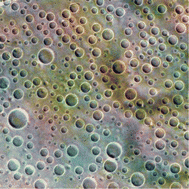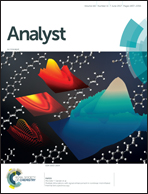Microscopic evaluation of aqueous two-phase system emulsion characteristics enables rapid determination of critical polymer concentrations for solution micropatterning†
Abstract
Aqueous two-phase systems have emerged as valuable tools for microscale analysis of cell growth and many other biotechnology applications. The most critical step in developing an aqueous two-phase system for a specific application is identifying the critical concentrations at which the polymer solutions phase-separate. Current techniques for determining these critical concentrations rely on laborious methods, highly specialized assays or computational methods that make this step difficult for non-specialists. To overcome these limitations, we present a simplified assay that uses only readily accessible laboratory instruments and consumables (e.g., multichannel micropipettes, 96-well plates and a simple compound microscope) to determine the critical concentrations of aqueous two-phase system-forming polymers. We demonstrate that formulations selected from phase diagrams that describe these critical concentrations can be applied for solution micropatterning of cells.

- This article is part of the themed collection: CSC100: Celebrating Canadian Chemistry


 Please wait while we load your content...
Please wait while we load your content...